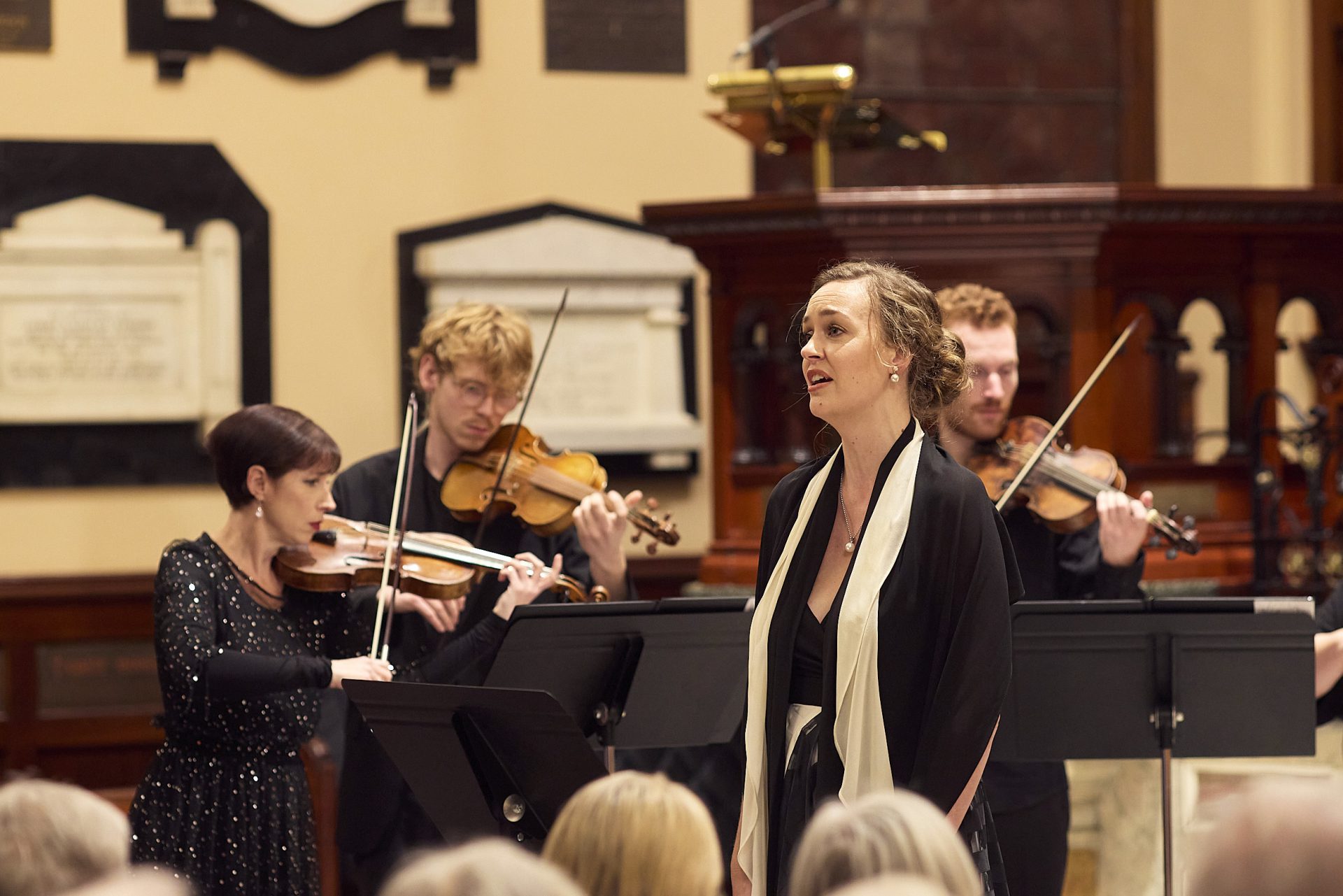A potpourri of the French, Italian and German styles.
As with all Bach Akademie Australia concert programs, the program did not focus obsessively on Bach. It put Bach into context, in part to appreciate the influences on Bach, and in part to appreciate the influence of Bach. That context was the French and Italian styles which had an enormous influence on the increasingly cosmopolitan lower German states in the early 18th century (think, for example, of the conspicuous French influence in Halle).
First was Domenico Scarlatti’s Salve Regina in A major. History has given the share of fame for vocal and choral composition to Domenico’s father, Alessandro. Domenico’s lot has been fame, or notoriety (to tortured keyboardists), for a prodigious quantity of keyboard sonatas bearing a heavy Iberian influence. That is not altogether unfair. Alessandro’s choral works, like his Stabat mater, are infinitely more intricate in art and arresting in effect. That is not to deny that Domenico’s Salve Regina has a charm of its own. The opening movement consists of a gracefully ascending bassline which unfurls to reveal what Kirkpatrick identified in Domenico’s keyboard works – the ‘crux’ – whereupon the voice, as though by mirror, begins descending in minor. The effect of all this is to give a delicious chiaroscuro effect, so we are in fact not so far from his colourful Spanish-inspired keyboard works.
Hannah Fraser ad libs a neat cadence to close the first movement. The ‘At te clamamus’ is full of disrupted melismas and jumping broken chords; hence ‘clamamus’. Tasteful figured bass reliasations were given by Nathan Cox on a punchy Italian cembalo. But the strangely episodic nature of this entire work becomes known by the third movement, wavering feverishly as it does between styles and moods for each verse. To adopt Bach’s favourite dichotomy, Domenico clearly favoured invention over continuity. Yet one can still glean a hint of his father’s very Neapolitan liking for the strictures of the stile antico.
For the French, we have Rameau’s Entrée de Polymnie from Act IV, Scene 4 of Les Boreades. We are told the striking fact that Rameau had not composed anything of note until he was in his 50s. It is well known that Lully had obtained lettres patent from the Sun King granting him a monopoly over his distinctive tragedies lyrique, which he jealously guarded. It was not an atmosphere conducive to creative aspiration, not least for forebears like Charpentier. But Rameau had the good fortune of being born shortly before Lully’s death; two years before our “Class of ‘85”.
Bassoonist Ben Hoadley assumed centre stage for a plaintive instrumental introduction which was imbued with a nostalgic warmth.
The French and Italian themes coalesced in Bach’s Orchestra Suite No 3, in D major. Here it was played sans tromba. But not much was missed. The tromba are merely inserted as reinforcements. The strings pull much of the weight. It was played double-dotted by Madeleine Easton to make the French rhythms more jagged and jarring. In the B-section, the theme was tossed to-and-fro between John Ma on viola and James Armstrong on violin. Easton shone in the Air, with very expressive phrasing and nice improvised flourishes. The rollocking Bouree and Gigue call for a vigorous performance on the bass strings, and this is exactly what Pippa Macmillan gave us on double bass, and Daniel Yeadon tres vitement on cello.
After the interval was Handel’s Concerto Grosso No 7 (Op 6). Its most striking feature is the B-section of its overture, which is a repeated high F that is diminished in each bar, which gives a shining effect on strings.
But the forces of the Italian style won the day, in one of Bach’s secular cantatas, Non sa che sia dolore, BWV 209. The opening sinfonia, which gives prominence to Mikaela Oberg on flute, recalls Bach’s B minor orchestral suite, which also gives prominence to the flute. Easton and the principal violins shifted with ease between bowing and pizzicato to make the rhythm more punctured.
The harmonic progression throughout is somewhat unusual, wavering as the text does between sorrow and courage, between “dolore” and “zelo”, between “dolore” and “goderai”.
Soprano Susannah Lawergen gave an impassioned but unstrained performance from the outset. Her voice mastered the balance between animation and ease. Her connection with the ensemble was clearest in the middle of the aria Parti pur e con dolore when her tempo increased gradually and ever so slightly to depict the anticipation in the text – “Varchi or di sponda in sponda”, or “Cross now from shore to shore”.
